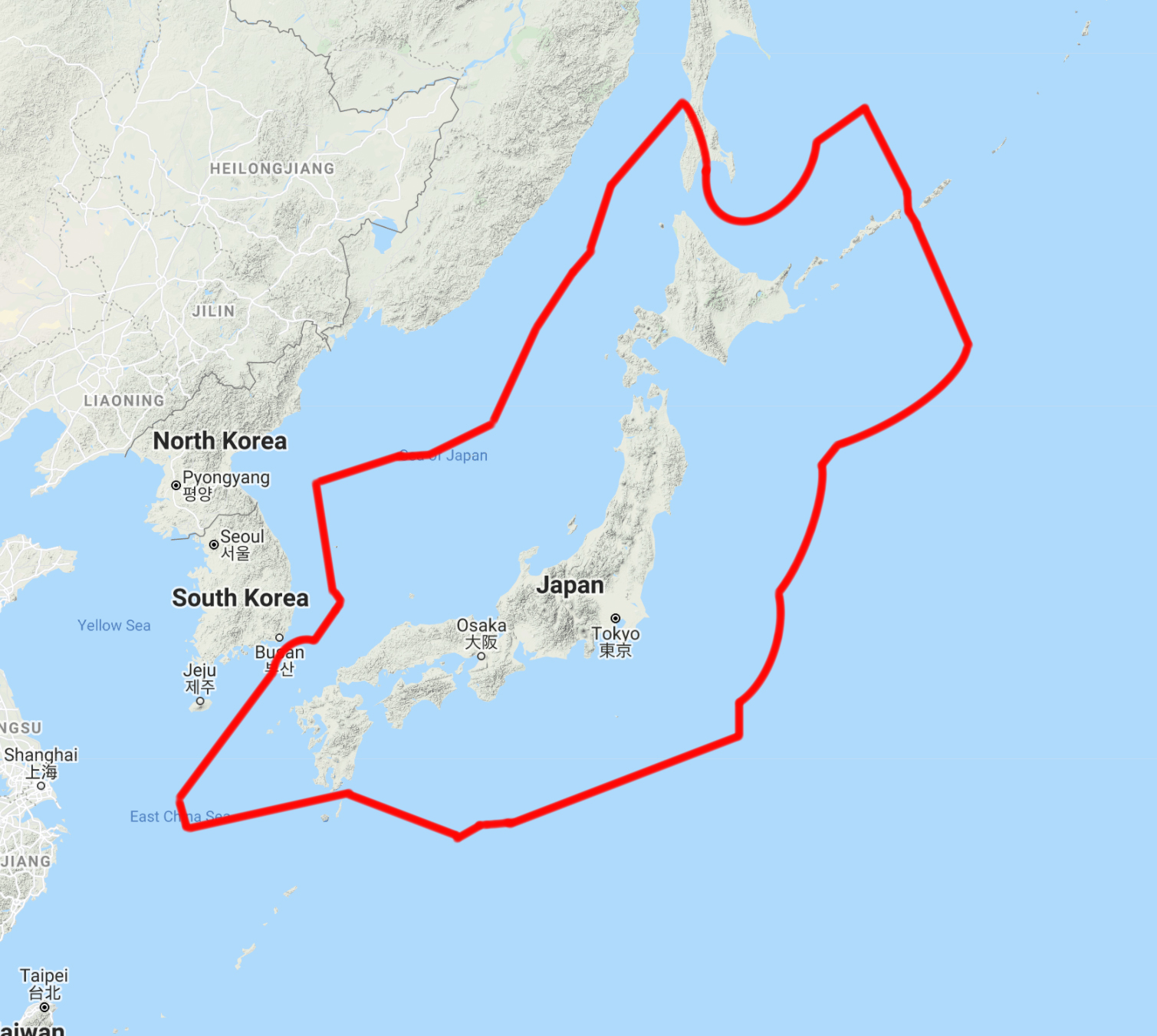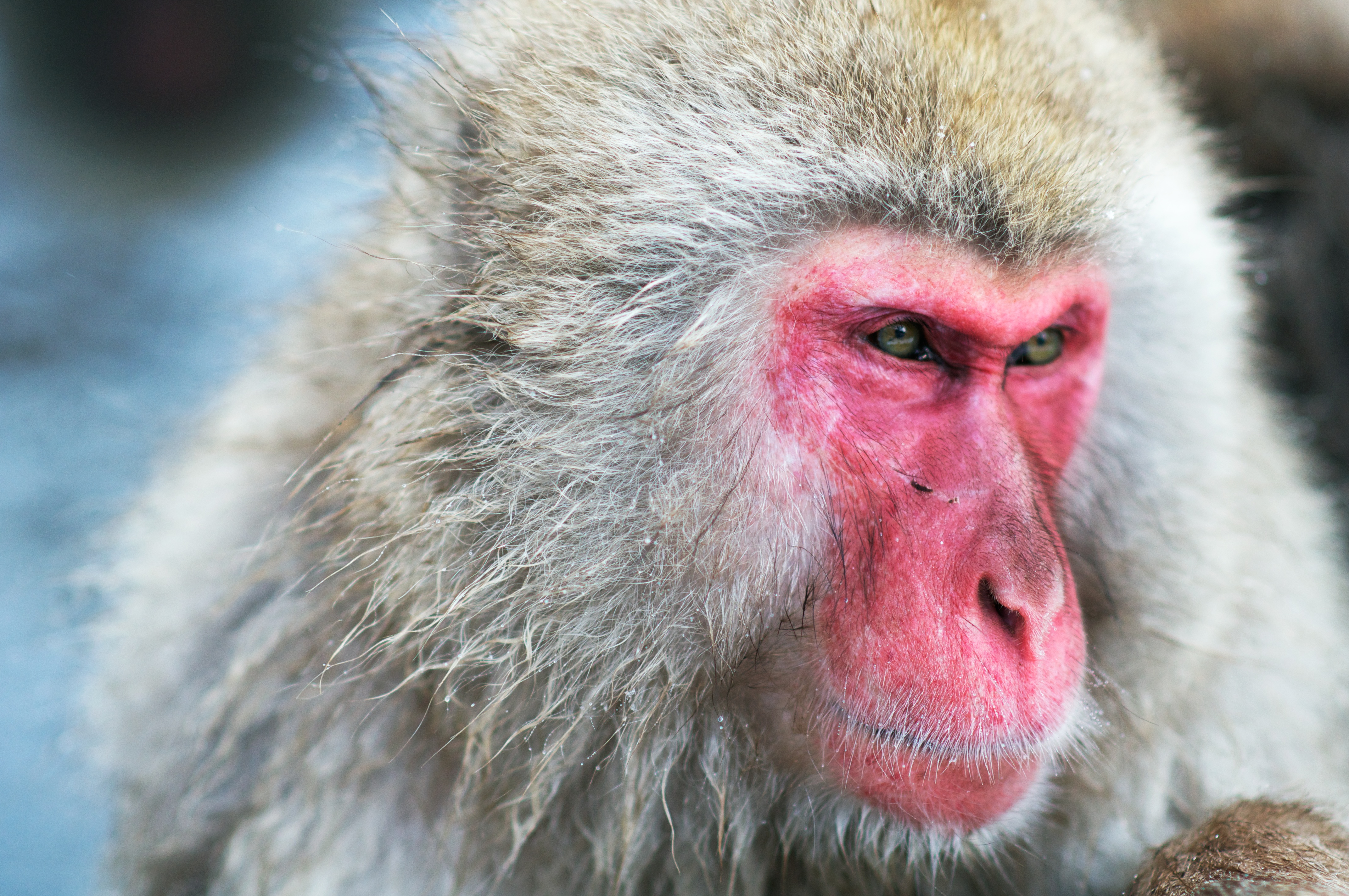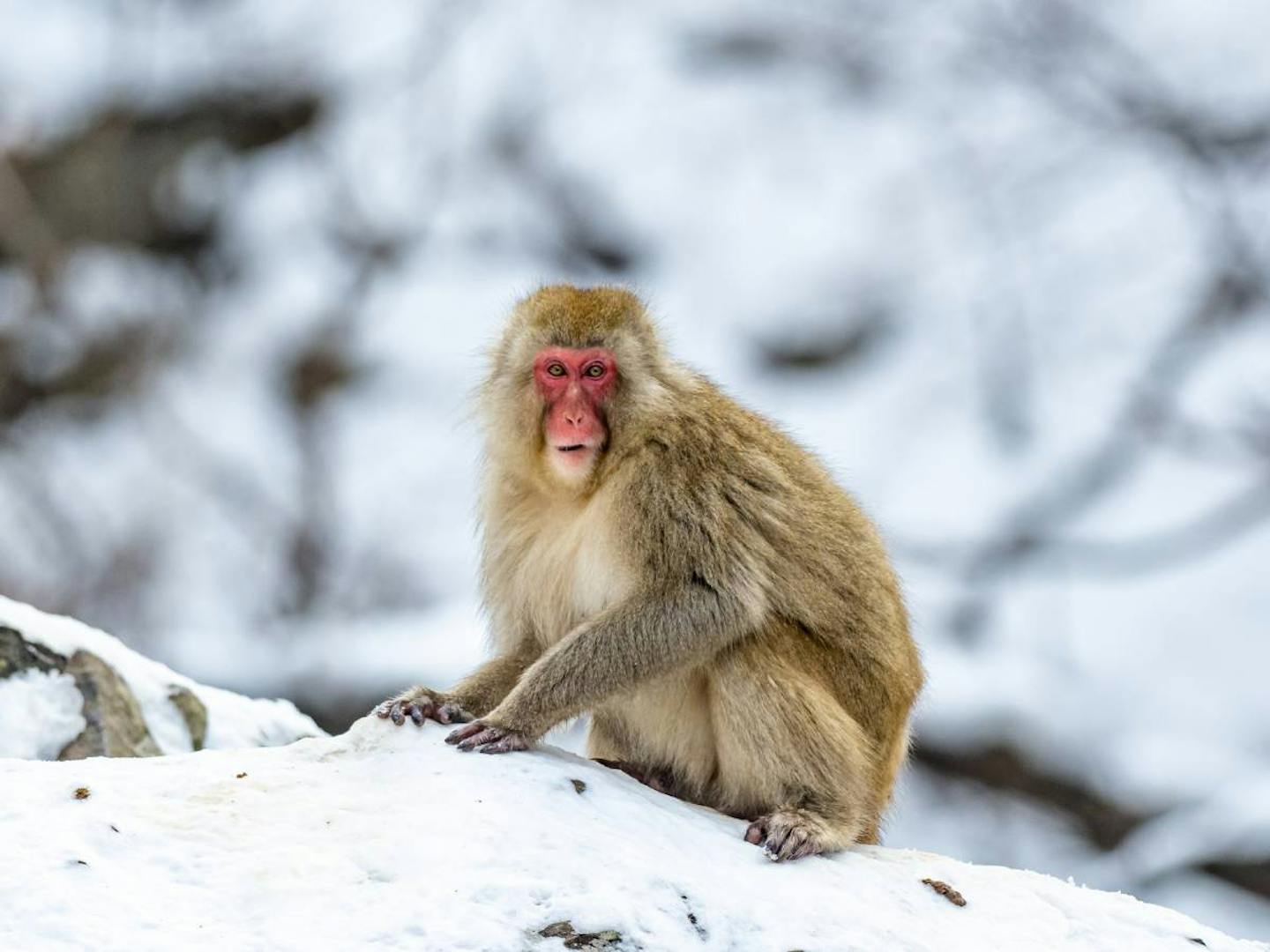Japanese macaque: scarlet faced monkeys who love hot spring baths
Our “Species of the Week” series highlights the flagship species of each of the 844 unique ecoregions contained within Earth’s bioregions.
Of the seven thousand islands that make up Japan, lush mountains cover four-fifths of the region. Sweltering summers of 32°C (90°F) are met by winters of sub-zero-degree temperatures. This drastic climate is particularly felt in the forest of Jigokudani, located in Central Japan.
Literally translating to “hell’s valley,” there is one particular species that thrives in the bleak, snow-blanketed cold, the Japanese macaque. Their distinct pinkish-red faces contrast against the brownish color of their coat, which evolved to be thick and fleecy.
No other primate, aside from humans, lives in colder climates than these snow monkeys.

Japanese macaques are the flagship species of the Taiheiyo Montane Deciduous Forests ecoregion, located in the Japan Forest Islands bioregion (PA47).
Sexually dimorphic, males weigh on average 11.3 kg (25 lb) with a height of 57 cm (22 in), while females weigh on average 8.4 kg (19 lb) with a height of 52 cm (20 in). Japanese macaques have short stumps for tails and are known to leap. With finger dexterity like that of a human, they dig through the snow for roots and soil to eat in the winter, and forage vegetation, insects, bark, fruit, nuts, and the occasional fish in warmer times of the year.
Japanese macaques follow a strict chain of command living in groups of up to thirty individuals. While a dominant male rules the group, Japanese macaques then follow a matrilineal line, ranking hierarchy by mother.
Grooming is vital to establishing these female relationships and for hygiene. Perhaps the Japanese macaques’ most notable grooming ritual is bathing in the natural hot springs surrounded by snow fall. The ruling male keeps watch over the females, while they remove tangles and fleas from each other's coats in the bubbling water.
Through observation it is thought that mothers pass these grooming techniques to their offspring through societal learning rather than by genetic means.

Image credit: SlimVirgin, Creative Commons
During mating season, the faces of both the male and female turn a deep scarlet red. Dominant males are more successful in mating than subordinate males as they guard their territory. Due to this, females are known to engage in same-sex mounting. Mothers give birth on the ground and carry their infants on their bellies for the first four weeks, switching then to their back and will carry up to a year. Females without offspring of their own participate in alloparenting and watch over young to give new moms a “break.”
Known in Japan as the Nihonzaru from Nihon meaning "Japan" and saru meaning "monkey,” this species is so popular in the culture that simply saying saru refers to the Japanese macaque. It is one of Japan’s most mythologized animals featured in religion, folklore, and art. Common in proverbs, it is the species used in the traditional "three wise monkeys,” which warn people to "see no evil, hear no evil, and speak no evil.”
The biggest threat to these icons is habitat destruction. As lumber plantations replace natural forests, Japanese macaques have nowhere else to go as they are limited to the islands’ coasts. Although not immediately threatened, they are protected under the Convention on International Trade in Endangered Species which places a ban on hunting and conserves and protects the species in wildlife parks throughout Japan.



